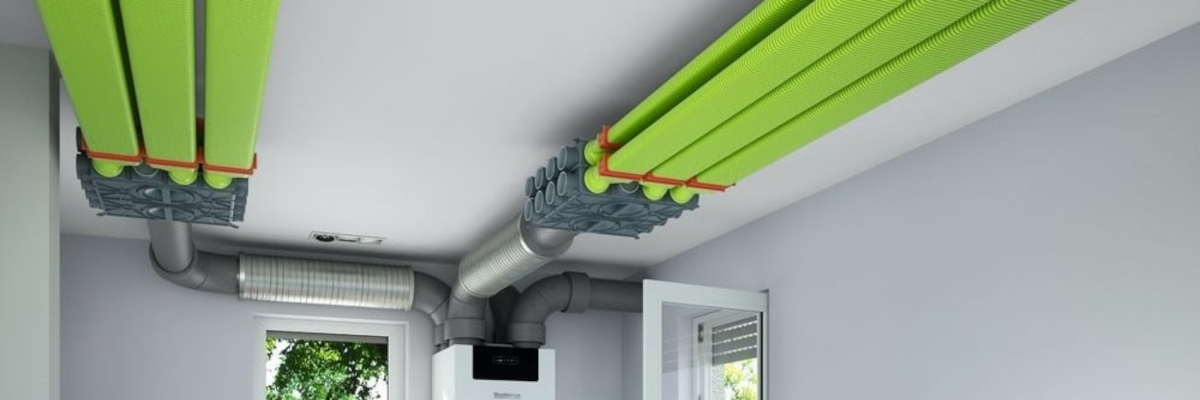
Ventilation with heat recovery
Energy saving and the right amount of fresh air.
With the Passive House Concept, only a small amount of operating energy is required due to the insulation, triple-glazed windows, avoidance of thermal bridges, an airtight building envelope and a ventilation system with heat recovery, so that a conventional and expensive heating system can be dispensed with.
The tight building shell, which is essential for the Passive
House Principle, ensures that energy is not lost uncontrolled to the environment. With the sealing of the
building envelope, however, the exchange of routes is also restricted.
Moisture and odors, e.g. from the breathing of the house occupants or from cooking, washing, showering, etc.,
can then no longer escape to the outside on their own. At the same time, no fresh air can get into the house.
Necessity of ventilation in a Passive House
Opening windows to get rid of odors or to get moisture out of the room has become a habit. In
principle it is possible to open windows but this should not be necessary in the Passive
House due to appropriate ventilation system.
The problem is the possible loss of ventilation heat. Especially if the windows are left
open for a long time, the rooms can cool down in the cold winter months and heat up in the
summer.
So that the necessary air exchange is controlled and guaranteed without major ventilation heat
losses, a ventilation system should be used that uses the heat from the exhaust air via an
installed counterflow heat exchanger to automatically preheat the intake air. This further
reduces the heating requirement in the interior.
Good filters also improve the quality of the air for the residents!
Comfortable living spaces in a passive house - without a conventional heating system
The great advantage of a passive house is that there is an all-round pleasant room climate and constant interior temperatures in both, summer and winter - and that without a classic heating system or air conditioning system.
So the question arises: Can a Passive House really get by without heating?
Not quite, but the rest of the heat demand is so low that no conventional heating system is necessary.
Controlled living space ventilation with heat recovery reduces the heating requirement in a Passive House by up to 90 percent compared to an average building.
The remaining 10 percent can be covered with any heating concept, such as: